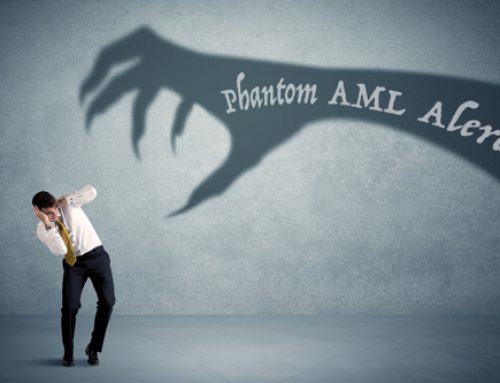 Even though ESIGN Act has been around since 2000, with more and more consumers pushing for online services, from receiving their statements in an email to online applications for a loan, we’re seeing a surprising number of lingering ESIGN compliance issues. That’s why it is a good idea to occasionally step back and look at how the Act came into existence, what its terms really mean, and what are the common trouble spots. We’ll cover each of these areas in this Director’s Briefing.
Even though ESIGN Act has been around since 2000, with more and more consumers pushing for online services, from receiving their statements in an email to online applications for a loan, we’re seeing a surprising number of lingering ESIGN compliance issues. That’s why it is a good idea to occasionally step back and look at how the Act came into existence, what its terms really mean, and what are the common trouble spots. We’ll cover each of these areas in this Director’s Briefing.
History and Significance of ESIGN
Not surprisingly, the issue of electronic signatures didn’t reach national importance until 1999 with the implementation of the Uniform Electronic Transactions Act, which sought to conventionalize state laws regarding electronic transactions. Specifically, the UETA manifested that electronic signatures are just as legally valid as hand-written signatures.
The requirements were made more detailed with the introduction of the Electronic Signatures in Global and National Commerce (or ESIGN) Act, signed into law by President Bill Clinton in 2000.
This act designates that an electronic signature is legally binding and satisfies any statute, regulation, or law that requires a signature, as long as the signer has agreed to such use. Providing this consent, which is also known as “opting in,” is absolutely crucial for compliance to the act. We’ll get into that in more detail in part two of this video.
The act allows businesses to provide notices and disclosures in an electronic format, again, so long as they receive consumer consent.
ESIGN also authorizes businesses to replace paper records with electronic records and allows for customization of requirements in that parties can create their own procedures and requirements for electronic contracts, agreements, and records.
On the consumer side, in addition to increasing the speed of transactions, ESIGN ensures that consumers receive protections equivalent to those guarding paper transactions, in part due to the fact that government agencies now have the same authorization electronically as they do physically to protect public interest. And of course, consumers may opt-out and return to a paper format at any time.
Definitions to Know
As always, an understanding of ESIGN would not be complete without an understanding of some important definitions, specifically the following four:
- Consumer
- An individual who obtains products or services which are used primarily for personal, family, or household purposes
- Electronic Agent
- An automated means (most often a computer program) used to initiate an action or respond to electronic records or performances without review or action by an individual at the time of the action or response.
- Electronic Record
- A contract or other record created, generated, sent, communicated, received, or stored by electronic means.
- Electronic Signature
- An electronic sound, symbol, or process, attached to or associated with a contract or other record executed by a person with the intent to sign the record.
Because the ESIGN legislation itself is only three pages long, it is relatively easy to follow. However, don’t let the brevity fool you—it is becoming more and more important to financial institutions as the years go on.
Common ESIGN Issues
Following review of several institutions for ESIGN compliance we’ve found the following common issues:
- Those who think they do not provide ESIGN and are therefore exempt from its requirements, but are not.
- Providing consumers ESIGN privileges but failing to obtain consumer consent.
- Charging high fees for consumers who wish to obtain paper copies.
Issue 1:
Many institutions believe they are exempt from ESIGN requirements, because they do not require electronic signatures online. However, these institutions most often do provide their disclosures or other forms in an electronic format, and this action falls under the provisions of the ESIGN Act.
Every institution has consumers who are pushing for faster processes and a reduction of transactions or disclosures in physical paper, and almost all institutions comply with this request in some manner. So if you think ESIGN is old news or isn’t applicable to your institution, think again.
To solve this issue, your compliance officer should review disclosures, forms, applications, and documents. For any that are provided electronically (most often via email), you need to enforce ESIGN compliance, specifically the section about disclosures.
Issue 2:
Providing appropriate consent disclosures. Doing so is not complicated, but strict adherence to the rules is important for ensuring your consumers’ consent is legally valid. The regulation states that institutions must provide a “clear and conspicuous statement informing the consumer:
- Of any right or option to have the record provided or made available on paper or in a non-electronic form… and whether any fee will be charged for that copy.
- Whether the consent applies only to the particular transaction…or to…categories of records that may be provided during the course of the parties’ relationship;
- [Of the right to withdraw consent and] procedures the consumer must use [to do so]
- [Of the procedures the consumer must use to] update information needed to contact the consumer electronically.”
Issue 3:
Charging high fees for paper copies. We’re well into 2015, so you know by now the reasons why electronic storage is more efficient than paper storage, which is expensive, easily misplaced, poses disposal difficulties, and takes up so much physical space. Nor do we need to mention that fax machines are getting phased out and sending documents through the mail is costly and slow.
That being said, just because you see paper storage as an archaic method of documentation, that doesn’t mean your consumers do. Many customers or members still want paper copies for their records. Although you can certainly encourage your consumers to receive statements and other documents electronically, it is not a best practice to charge high fees for consumers who do request paper versions in order to discourage them from this practice.
As you can see, resolving issues with ESIGN is fairly straightforward. There’s no reason why your institution should fall behind the times and neglect these requirements.




